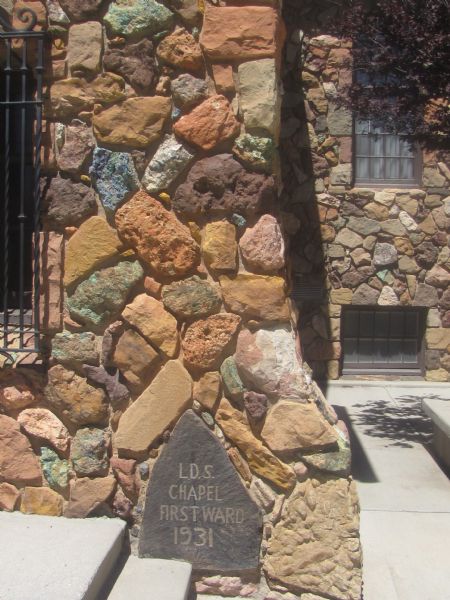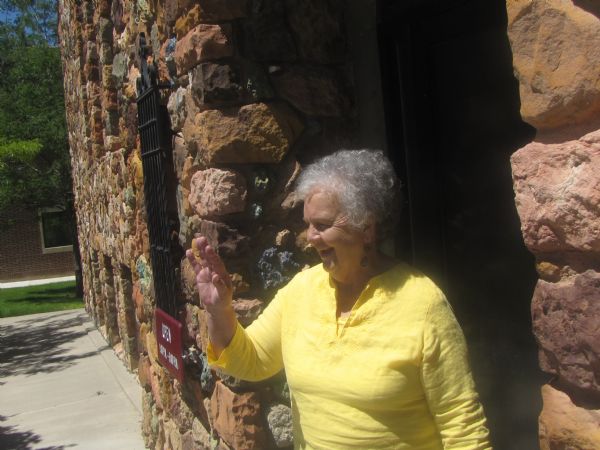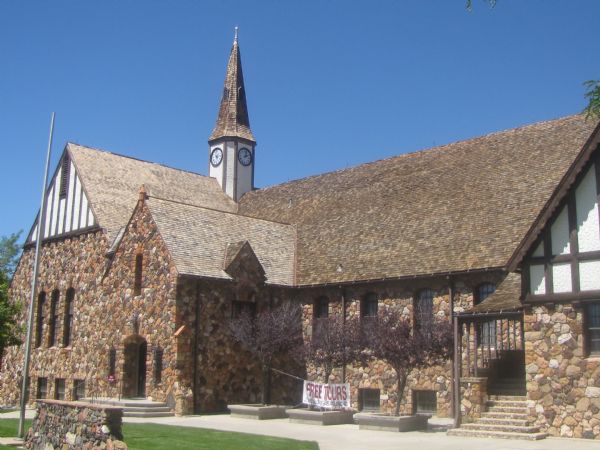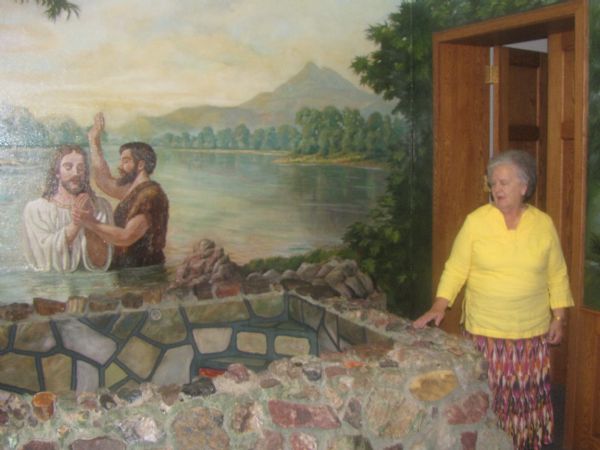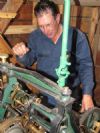This is an archived article that was published on sltrib.com in 2010, and information in the article may be outdated. It is provided only for personal research purposes and may not be reprinted.
Cedar City » Perhaps it's not surprising that the Depression's hard times gave rise to a hard church -- a rock one, in fact.
But for all its hardness, Cedar City's LDS Rock Church sure holds a soft spot in southwestern Utah hearts.
Maybe it's because the building boasts multicolored stones chiseled from the surrounding redrock region, and the chapel sports pews and a dais crafted from area cedar trees.
Maybe it's because the 76-year-old meetinghouse replaced a beloved LDS tabernacle, torn down to make way for a Main Street post office.
Maybe it's because so many volunteers donated their labor or because some paid workers gave back two-thirds of their meager wages to help fund the construction.
Maybe it's for all these reasons and more that this rock edifice has come to be known as the "church with a soul."
"It was [built] purely out of love, sacrifice, faith and determination of the settlers," explains Dale Orton, president of the Cedar City LDS Stake. "I was baptized and blessed in the church. It's a beautiful house of worship."
The First and 12th LDS wards still hold services there.
Janet Weaver, one of several residents offering tours of the Depression-era edifice, says the Rock Church sprouted when the property just to the west, on the corner of Center and Main streets and home to the Cedar City tabernacle, was sold to the federal government to build a post office.
The $29,000 from that sale went toward construction of the Rock Church, which ended up costing $87,000 -- paid through donations and funds from church headquarters.
The cornerstone was laid in 1931. Then-LDS Church President Heber J. Grant dedicated the building three years later, but not before it was fully paid for by the members who would use it.
"He [Grant] didn't want anyone moving into a mortgaged church," Weaver says.
Volunteers did much of the construction, she adds, but some workers earned $3 a day and donated back $2 toward the project, leaving them with just a dollar a day for their Depression-era sweat.
The general contractor, George A. Wood, had experience using stone from working on the lodges at Bryce Canyon and Grand Canyon national parks.
The building committee initially balked at the design, according to Hannah Davis Foster, who wrote a history of the construction.
"A rock church was unthinkable," she writes. " It would be unsightly and undesirable."
But the panel eventually embraced the plan when officials determined the design could save money and reflect the region's character by tapping building materials in and around Cedar City.
"They harvested the trees from the mountains around here," Weaver says, to make the pews and dais.
The original carpets were woven in Provo with wool from Iron County sheep and the chandeliers include iron from area mines.
Another significant room contains a baptismal font, constructed in the same rough stone and containing a wall mural depicting the baptism of Jesus by John the Baptist.
The font leaked, Weaver says, so its use was discontinued more than 60 years ago. But the room still serves as a classroom.
The Rock Church also is home to the old tabernacle's clock (bought from a Swiss maker with money collected by LDS Primary children). The clock still keeps time in the church's spire.
The clock's keeper, Bud Riddle, says a major overhaul about 10 years ago will ensure the timepiece keeps ticking and the chimes keep tolling (every half-hour) well into the future.
"We tore it apart and put in automatic winders," Riddle says. "I used to wind it by hand about twice a week."
Brent Baumgartner, bishop of the 12th Ward, says a World War II air raid siren in the tower used to alert the volunteer fire department.
"Until sometime in the '60s," he says, "it also it was sounded every day at noon to let people know what time it was."
Orton says when he was young, boys used to sneak into the clock tower. "There are bats up there whose ancestors I knew," he jokes.
In her history, Foster sums up what make the meetinghouse so meaningful to residents.
"It was an inspiration to see such products from nature's storehouse. There for the getting," she writes. "Is it any wonder the building had a soul, when the materials in it have stood for ages like a beacon light, for someone to be inspired as to their usage and reason for being there."
Rock Church has soul
Construction began May 27, 1931.
Dedicated by LDS Church President Heber J. Grant on May 27, 1934.
Construction material for exterior walls came from 100 wagon loads of stone collected from the region; red cedar trees for woodwork and pews; wool from area sheep woven into carpets; and iron from local mines fashioned into chandeliers.
Cost originally was estimated at $60,000. Real cost was $87,000 with $14,000 coming from donations.
Chapel seats 385 people, but the church can accommodate 1,000 when the foyer and recreation hall are opened.
Currently two LDS wards of around 1,000 members attend the church.
Free tours available from mid-June to mid-August.
"Thou art Peter, and upon this rock I will build my church; and the gates of hell shall not prevail against it."
Matthew 16:18


